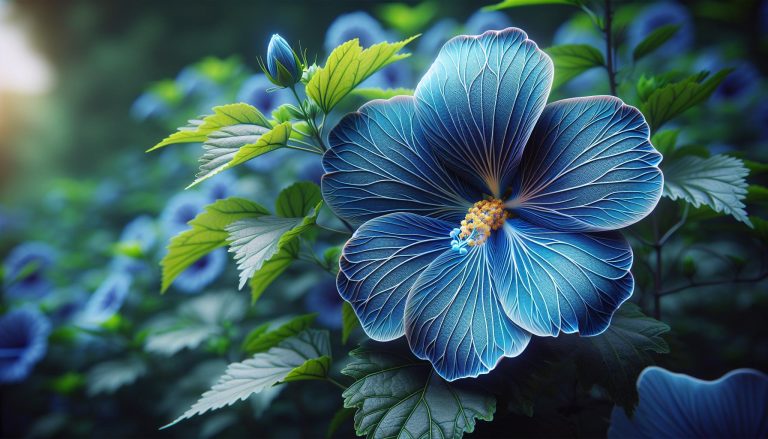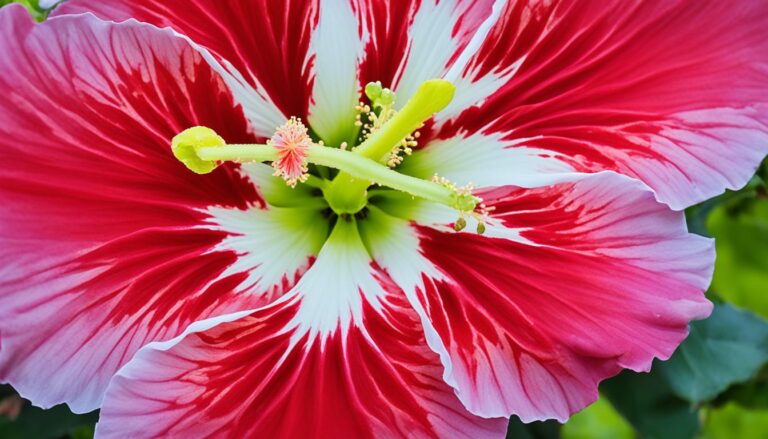Maximize Your Garden: Mastering Hibiscus Plant Height and Width
When we think of adding a splash of tropical flair to our gardens, the hibiscus plant often comes to mind with its large, vibrant flowers. But before we dive into planting, it’s crucial to understand the hibiscus plant’s height and width. These factors play a significant role in garden planning, ensuring our spaces look balanced and beautiful.
Knowing the potential size of your hibiscus can help you make informed decisions on where to plant it, how to space multiple plants, and what companion plants will complement it best. Whether you’re aiming for a lush, tropical theme or just a pop of color, getting familiar with the growth habits of your hibiscus is the first step. Let’s delve into the essentials of hibiscus plant dimensions, setting the stage for a garden that’s both stunning and well-organized.
Key Takeaways
- Varieties Impact Size: Hibiscus plants come in two main types, tropical and hardy, with significant differences in size. Tropical hibiscus can reach 4 to 10 feet in height and 5 to 8 feet in width, whereas hardy varieties typically grow 3 to 8 feet tall and 4 to 6 feet wide, influencing garden planning and spacing.
- Size Influenced by Conditions: The height and width of hibiscus plants are greatly affected by climate, soil quality, watering practices, and sunlight exposure. Optimizing these conditions supports the plants in reaching their full potential.
- Pruning and Care Strategies: Effective pruning, appropriate fertilization, and careful repotting/spacing, especially for container-grown hibiscus, are crucial for managing plant size. Pruning stimulates flowering and shapes the plant, while fertilization and correct pot selection encourage healthy growth.
- Common Growth Challenges: Pests, diseases, and nutritional deficiencies can impede hibiscus growth. Treating pests, managing diseases proactively, and ensuring balanced nutrition can help maintain the desired plant size.
- Garden Planning Considerations: Understanding the distinctive growth patterns and sizes of hibiscus varieties, alongside robust care strategies, enables gardeners to integrate these vibrant plants effectively into garden designs, ensuring aesthetic appeal and plant health.
Understanding Hibiscus Plant Size
Why It Matters
In the context of garden planning, understanding the size of hibiscus plants plays a critical role. Hibiscus plants, known for their vibrant flowers and lush foliage, can vary significantly in both height and width. Recognizing these dimensions ensures that we allocate enough space for each plant to thrive without overcrowding. Moreover, this knowledge enables us to anticipate the visual impact the plants will have once they reach maturity. For instance, taller hibiscus varieties make striking backdrop plants, while shorter ones are ideal for borders and foreground placement. Furthermore, by considering the size of hibiscus plants, we can better manage sunlight exposure and air circulation around each plant, enhancing the overall health and beauty of the garden.
General Growth Patterns
Hibiscus plants exhibit diverse growth patterns depending on the species and cultivar. Typically, hibiscus plants can be categorized into two main groups: tropical hibiscus and hardy hibiscus.
Tropical hibiscus, often grown as potted plants in colder climates, generally reach heights of 4 to 10 feet and widths of 5 to 8 feet when grown outdoors in favorable conditions. These plants need a year-round warm climate to reach their full potential.
In contrast, hardy hibiscus varieties, which can withstand colder temperatures, tend to grow taller and wider. They usually achieve heights of 3 to 8 feet and can spread out 4 to 6 feet wide. Hardy hibiscus plants are known for their ability to return each year even after dying back in winter, gradually expanding in size with each growing season.
Both groups of hibiscus plants share a growth pattern that involves vigorous spring and summer growth spurts, followed by flowering that peaks in the warmer months. Understanding these patterns is essential for successful garden planning and for ensuring that each hibiscus plant has the room it needs to showcase its stunning blooms to their best effect.
Key Factors Influencing Hibiscus Plant Height and Width

The growth, including height and width, of hibiscus plants significantly depends on a variety of factors. By recognizing and optimizing these key conditions, gardeners can ensure their hibiscus plants thrive, reaching their full potential for size and beauty.
Climate Impact
The climate plays a pivotal role in determining the growth pace and ultimate size of hibiscus plants. Tropical varieties, for instance, require warm temperatures year-round and do not fare well in cold weather, limiting their growth in non-tropical climates. Conversely, hardy hibiscus varieties are capable of withstanding cooler temperatures and can achieve their maximum size potential when planted in a climate that suits their cold tolerance. If the temperature dips below their tolerance level, their growth can be stunted, affecting both height and width.
Soil Quality and Type
Soil quality and type greatly impact hibiscus plant development. Hibiscus plants prefer well-draining soil enriched with organic matter to promote healthy root growth, which in turn supports robust aerial growth. Poorly draining soils or those lacking in nutrients can cause root issues, such as rot, limiting the plant’s ability to absorb water and nutrients efficiently. This limitation can restrict growth, preventing the plant from reaching its typical height and width.
Watering Practices
Consistent and appropriate watering contributes to the optimal growth of hibiscus plants. These plants prefer a consistent level of moisture but do not tolerate standing water or overly dry conditions well. Overwatering can lead to root rot, while under-watering can stress the plant, both conditions adversely affecting the plant’s overall size and health. Establishing a regular watering schedule that adjusts for rainfall ensures the hibiscus plant receives the moisture it needs to grow wide and tall.
Sunlight Exposure
Sunlight exposure is critical for the growth of hibiscus plants. They require full sun to part shade to photosynthesize effectively, which fuels their growth. Ideally, hibiscus plants should receive at least six hours of direct sunlight daily. Insufficient sunlight can lead to leggy plants with sparse leaves and reduce the overall density of the plant, thus affecting both its height and width. In contrast, optimal sunlight exposure encourages compact, lush growth with abundant, vibrant blooms.
Comparing Hibiscus Varieties

Tropical vs. Hardy Hibiscus
When we dive into the world of hibiscus plants, we distinguish two primary types: tropical and hardy hibiscus. Tropical hibiscus, known for their glossy leaves and vibrant, large blooms, thrive in warmer climates. Typically, these plants reach heights of 4 to 10 feet, depending on the variety and growing conditions. They require plenty of sunlight and humidity to flourish, making them ideal for indoor growth in cooler regions.
On the other hand, hardy hibiscus plants are robust, can withstand colder climates, and often die back to the ground in winter, sprouting afresh in spring. They boast larger blooms, sometimes reaching the size of dinner plates, and can grow up to 3 to 7 feet tall. Hardy varieties adapt well to outdoor environments in various climate zones, preferring full sun to partial shade and well-draining soil.
Popular Hibiscus Varieties and Their Sizes
Among the multitude of hibiscus varieties, several stand out due to their popularity and distinct characteristics. Here, we’ll highlight a few notable ones:
- Hibiscus rosa-sinensis: Often considered the poster child for tropical hibiscus, this variety boasts glossy leaves and a wide range of bloom colors. It generally reaches 5 to 8 feet in height.
- Hibiscus syriacus (Rose of Sharon): A hardy hibiscus variety known for its ability to withstand cold climates. It commonly grows to 8 to 12 feet tall, offering a diverse palette of flower colors.
- Hibiscus moscheutos (Swamp Hibiscus): Renowned for its large, showy flowers, this hardy variety prefers moist soils and can reach heights of 3 to 8 feet, making it suitable for garden borders or as a focal point.
- Hibiscus acetosella (Red-Leaf Hibiscus): Distinguished by its striking dark red foliage, this tropical hibiscus can grow up to 8 feet tall in ideal conditions, providing a unique contrast to traditional green-leaved plants.
By understanding the differences and size ranges of these popular hibiscus varieties, gardeners can make informed decisions when planning their garden spaces, ensuring each plant has the room it needs to showcase its beauty effectively.
Tips for Managing Hibiscus Plant Height and Width

Following our exploration of the growth patterns and characteristics of hibiscus plant varieties, it’s crucial to delve into effective strategies for managing their size. Properly managing the height and width of hibiscus plants maximizes their beauty and ensures they fit well within your garden space. Let’s tackle the best practices in pruning techniques, appropriate fertilization, and repotting and spacing for container-grown hibiscus.
Pruning Techniques
Pruning stands out as a vital practice for controlling the size and shape of hibiscus plants. Starting in early spring, before the new growth begins, targets the plant’s natural growth cycle effectively. Use clean, sharp pruning shears to remove dead or weak branches, which encourages healthier growth. Pruning just above a node or eye on the branch promotes new growth in the desired direction, allowing gardeners to shape the plant. Additionally, pruning stimulates flowering in hibiscus plants, as it directs the plant’s energy towards the development of beautiful blooms. Regular maintenance pruning throughout the growing season keeps the plant manageable and aesthetically pleasing.
Appropriate Fertilization
Fertilization plays a pivotal role in the growth and health of hibiscus plants. Using a balanced, slow-release fertilizer with a ratio close to 10-10-10 (nitrogen, phosphorus, potassium) supports overall health and vigorous growth. Applying fertilizer during the growing season, typically starting in early spring and ending in late summer, ensures the plant has the nutrients it needs without promoting excessive late-season growth that could be damaged by early frosts. Over-fertilization can lead to rapid, weak growth that affects the plant’s structure and flower production. Therefore, adhering to the recommended amounts and schedule is crucial for balanced growth.
Repotting and Spacing for Container-Grown Hibiscus
For hibiscus grown in containers, repotting and proper spacing are essential for managing plant size and health. Hibiscus plants thrive in containers that provide sufficient room for root growth without being overly spacious. Generally, choosing a pot that is 2-3 inches larger in diameter than the current one suits this need perfectly. Repotting every 2-3 years, or when roots become visible at the drainage holes, prevents the plant from becoming root-bound, which can stunt growth and flowering. When growing multiple hibiscus plants in containers, spacing them at least 2-3 feet apart allows adequate air circulation and room for growth, preventing overcrowding and promoting healthy development.
By adhering to these guidelines for pruning, fertilization, and repotting, gardeners can effectively manage the height and width of their hibiscus plants, ensuring they remain a stunning addition to their garden for years to come.
Common Issues Affecting Hibiscus Size

Transitioning from the strategies for managing hibiscus plant size, it’s crucial to address common issues that might impede their growth. Understanding these challenges allows gardeners to take proactive steps to protect their hibiscus plants, ensuring they reach their potential in both height and width.
Pests and Diseases
Pests, such as aphids, spider mites, and whiteflies, commonly target hibiscus plants. These pests suck the sap from the plants, weakening them and stunting their growth. Similarly, diseases like hibiscus rust, leaf spot, and bacterial wilt can severely affect a plant’s health and its ability to grow to its full size. Treating pests with insecticidal soap and removing infected parts of the plant are effective measures in mitigating these issues. Furthermore, ensuring good air circulation around the plants and avoiding wetting the leaves can help prevent the onset of diseases.
Nutritional Deficiencies
Nutritional deficiencies significantly impact the size of hibiscus plants. A lack of essential nutrients, such as nitrogen, phosphorus, and potassium, can limit a plant’s growth. Nitrogen, in particular, is crucial for leaf development and overall growth, while phosphorus supports strong root development. Potassium is necessary for the plant’s overall health and resistance to pests and diseases. Incorporating a balanced, slow-release fertilizer designed for flowering plants can correct these deficiencies, promoting healthy growth and vibrant blooms. Monitoring soil pH and ensuring it remains between 6.0 and 7.0 also promotes nutrient uptake, aiding in achieving the desired height and width of hibiscus plants.
Conclusion
We’ve explored the diverse world of hibiscus plants, understanding their varying sizes and how to manage their growth effectively. Whether you’re cultivating tropical or hardy varieties, the key lies in paying close attention to their specific needs—be it in sunlight exposure, watering habits, or soil quality. Pruning, fertilization, and proper spacing play crucial roles in maintaining the health and aesthetics of these vibrant plants. By addressing common issues like pests and diseases and ensuring nutritional needs are met, we can ensure our hibiscus plants thrive, adding a burst of color and life to our gardens. Let’s embrace these practices to enjoy the full beauty and potential of our hibiscus plants.
Frequently Asked Questions
What is the typical height and width of hibiscus plants?
Hibiscus plants vary in size; tropical varieties often reach 15 feet in height and width, while hardy hibiscus are generally smaller, maxing out around 7 feet tall and wide.
How do climate and soil quality affect hibiscus growth?
Climate significantly affects hibiscus growth, with tropical varieties thriving in warm conditions. Both tropical and hardy hibiscus require well-draining, nutrient-rich soil. Poor soil quality and incorrect climate conditions can stunt growth.
What are the best practices for watering and exposing hibiscus to sunlight?
Hibiscus plants prefer consistent moisture without waterlogging and need full sunlight for optimal growth. In hot climates, partial afternoon shade can prevent overheating.
What are the key strategies for managing the size of hibiscus plants?
Key strategies include regular pruning to shape the plant and control its size, appropriate fertilization to promote healthy growth, and correct repotting and spacing for container-grown hibiscus to avoid crowding.
How does pruning affect hibiscus plants?
Pruning is crucial for controlling the size and shape of hibiscus plants. It helps in removing dead or weak branches, encouraging bushier growth, and improving overall plant health and bloom production.
Why is proper fertilization important for hibiscus plants?
Proper fertilization provides essential nutrients like nitrogen, phosphorus, and potassium, promoting vibrant growth and abundant flowering. Over or under-fertilizing can negatively impact plant health and size.
How can repotting and spacing impact container-grown hibiscus?
Repotting and adequate spacing ensure that container-grown hibiscus have enough room to grow. This prevents root crowding, which can stunt growth and reduce flowering.
What are common pests and diseases affecting hibiscus growth?
Aphids and diseases like hibiscus rust are common issues. These pests and diseases can hinder growth by damaging leaves, stems, and roots, affecting the plant’s overall health.
How can nutritional deficiencies affect hibiscus plants?
Nutritional deficiencies, particularly in nitrogen, phosphorus, and potassium, can stunt growth, reduce flowering, and lead to weak, discolored leaves. Using balanced fertilizers and monitoring soil pH can help mitigate these issues.






